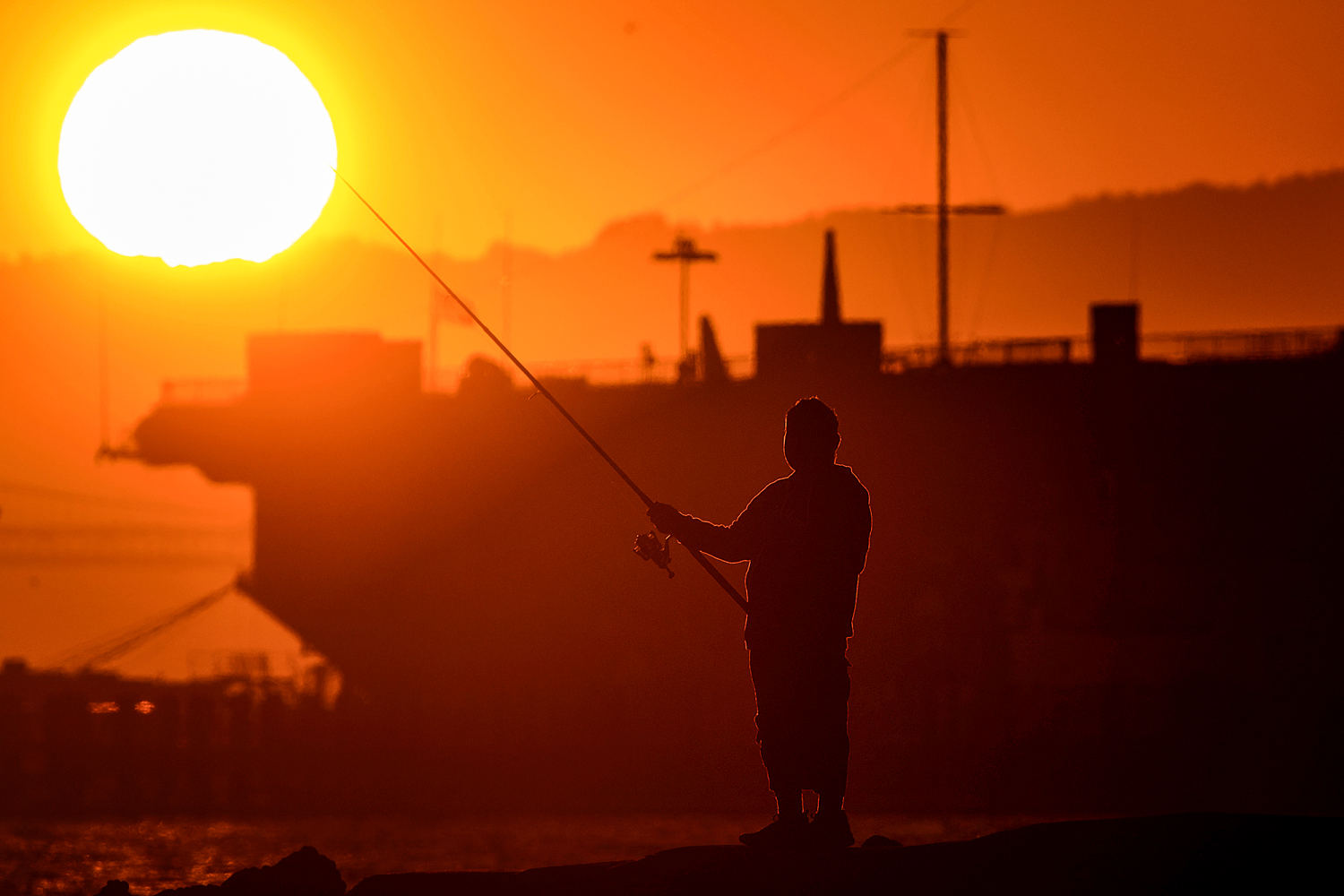 Science & Environment
Science & Environment
Triple-digit temperatures expected over July Fourth holiday; nearly 150…

Heat warnings and watches are in effect for nearly 150 million people across 21 states for the holiday period, with dangerous and potentially historic extreme heat due for the West in the coming days and temperatures of 115 degrees possible.
Several daily heat records were broken Tuesday, and more than 130 could be set through next Tuesday.
The California cities of San Rafael and Livermore hit all-time highs Wednesday, clocking in at 100 and 110 degrees respectively.
Excessive heat warnings are in effect for much of California and southern Nevada and parts of Arizona, Washington and Oregon. An excessive heat warning means potentially life-threatening conditions, “with a high to very high risk for much of the population due to long duration heat with little to no overnight relief.”
The National Weather Service in the San Francisco Bay Area warned that “an exceptionally dangerous situation is underway as we enter a potentially historic and deadly heat event.”
It said that heat is the No. 1 weather-related cause of death in the U.S. and that “it is VERY LIKELY that we add to that statistic if preparations are not taken seriously.”
The extreme heat in the San Francisco area could last six to 12 days, the weather service there said, making it the longest stretch of extreme temperatures the Bay Area has experienced in at least 18 years.
The city of Los Angeles issued an excessive heat warning Wednesday, noting that the stretch of scorching temperatures could last through “at least” Monday, with temperatures that could climb to 106 in parts of Los Angeles “for many days in a row.”
In Oregon — where temperatures are expected to reach near record levels this weekend — Gov. Tina Kotek issued a warning Wednesday and said state agencies were working to open cooling centers to combat the heat wave.
And the weather service in Seattle warned Wednesday that the forecast for a hot holiday weekend remains intact, with highs in the 90s, peaking Sunday.
Across the Plains and the Southeast, the heat index — which measures how hot it feels when humidity is taken into account — could reach 100 to 115 on Wednesday.
The heat index could reach 116 degrees in Little Rock, Arkansas, while Phoenix is set to reach 113 on the same scale.
On Wednesday, Little Rock officially hit 100 degrees for the first time this year, 301 days since the last time the mercury climbed that high in the city.
Phoenix hit a high of 113 degrees Wednesday, the 16th day in a row the city has had temperatures at or above 110.
Phoenix police said a child died hiking on South Mountain on Tuesday “as a result of a heat-related medical event.” The police department said the victim’s family had been on the trail since early in the day.
The Southern Plains and the Lower Mississippi Valley are likely to get “oppressive heat and humidity” over the holiday, according to the weather service, with temperatures reaching into the upper 90s and the low 100s and heat indexes into the 110s. It said the heat wave is expected to spread east into the Mid-Atlantic toward the end of the week.
A number of cities have already canceled or postponed July Fourth fireworks ceremonies and parades because of high temperatures and dry conditions that could cause wildfires.
In California, St. Helena said it was postponing its fireworks show until later in the year when weather conditions are better. And Oroville canceled its Fourth of July fireworks, citing the Thompson Fire, which has been blazing nearby since Tuesday.
Antioch, California, nixed its daytime parade because of the heat but said it still planned to put on a fireworks show Thursday evening.
Excessive heat and humidity will stretch from Nashville, Tennessee, to New Orleans on Wednesday and Thursday, but slightly cooler temperatures arrive by Friday.
It has already been a record-breaking year for temperatures. It’s only early July, but Miami has spent more time at or above 105 degrees on the heat index than in all of 2019.
The extreme heat brings an increased risk of wildfires. About 4 million people, most of them in California, are under red flag warnings. The warnings urge people to be careful with open flames — an added risk with holiday firework displays taking place.
There is also the chance stormy weather across the Central U.S. will disrupt some holiday gatherings.
About 13 million people are at risk of severe storms across the western High Plains and the Ohio River Valley. High wind is likely across both areas, along with hail and isolated tornadoes in the region.
Thursday, 6 million people are under a slight risk of severe storms across much of Missouri and parts of Kansas and Oklahoma.
A secondary area of storms that may light up by afternoon could be Iowa, where tornadoes are possible. The main threat will be damaging winds for cities like Kansas City, Missouri, and Topeka, Kansas.
A low pressure front over the central High Plains and a frontal boundary stretching from the lower Great Lakes to the central Plains could be “the triggers for some meteorological fireworks,” the weather service said.
Flash flooding as a result of heavy rain is possible between eastern Kansas and the Ohio Valley.










